1. Cross the historic Edmund
Pettus Bridge and arrive in Selma.
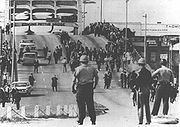
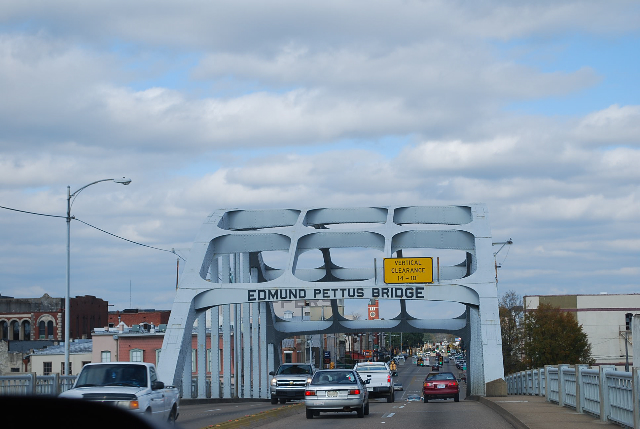
 2. A driving tour of Old
Live Oak Cemetery
2. A driving tour of Old
Live Oak Cemetery
and downtown Selma, its historic churches and
homes.
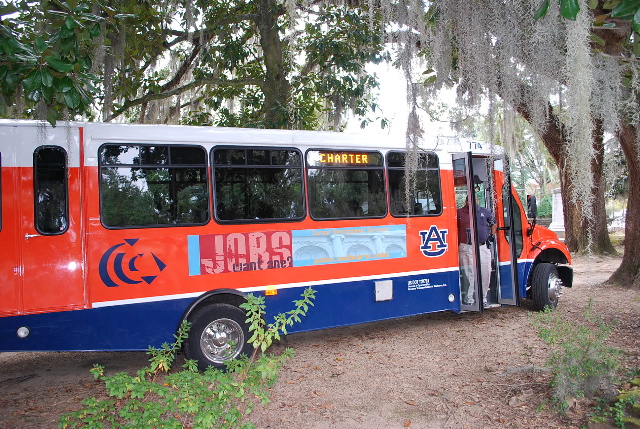
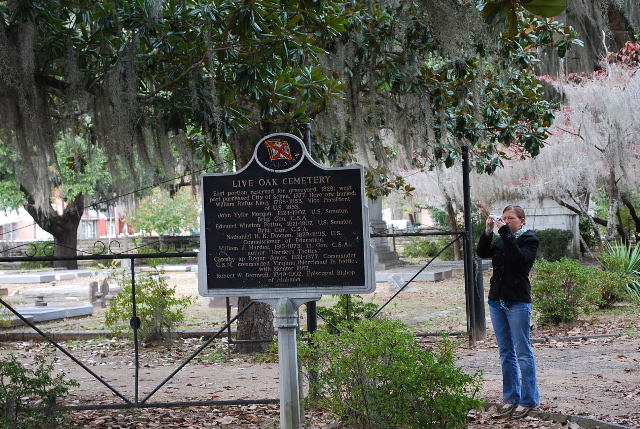
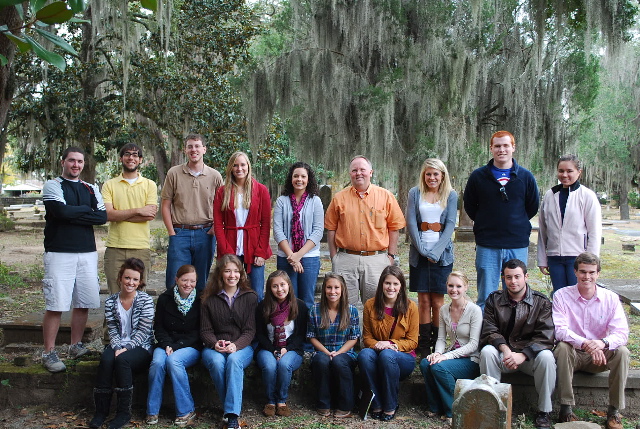
Newswriting class group photo in Selma's historic Old Live Oak Cemetery.
Damian, our Tiger Transit driver, shoots our photo!
One
of the few cemeteries in the South on the National Register of Historic
Sites,
Old Live Oak is the resting place of more than 8,000 people.
Several
famous women are buried in Old Live Oak including: Elodie Todd Dawson,
staunch Confederate supporter and sister-in-law of Abraham Lincoln;
Harriet Hooker Wilkins, the Selma suffragist who in 1922 became the
first woman elected to the Alabama Legislature; Clara Weaver Parrish,
member of one of Selma's first families and internationally known
artist who also is noted for Tiffany stained glass designs (several are
in Selma churches); and Frances John Hobbs, well known suffragist who
sewed the most valuable treasures from her jeweler husband's shop into
her petticoats, saving them from Union Army looters.
Other historic burial sites include those of William Rufus King,
founder of Selma, U.S. senator and vice president of the United States;
Benjamin Sterling Turner, Alabama's first black congressman; N.H.R.
Dawson, Confederate colonel who later was appointed U.S. commissioner
of education; John Tyler Morgan and Edmund Winston Pettus, both
Confederate generals who later became U.S. senators; Catesby ap Roger
Jones, commander of the Confederate ironclad Merrimac (or Virginia) and
of the Confederate Naval Ordnance Works at Selma; and the Rev. Arthur
Small, a Presbyterian minister who died in the Battle of Selma.
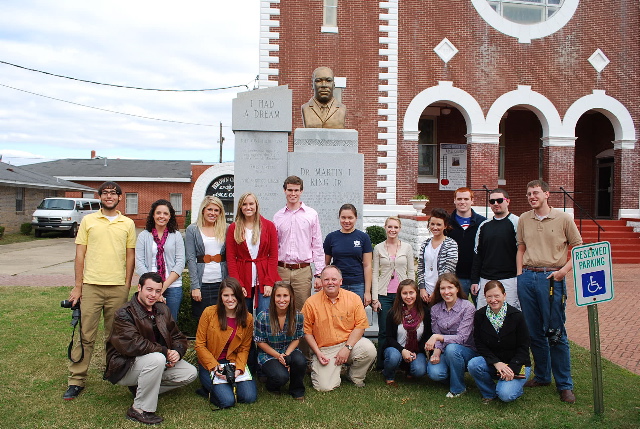
Group photo in front of Brown Chapel AME Church whick played
pivitol role
in the Selma, Ala., marches that led to the passage of the 1965
Voting Rights Act.
2. Lunch at (Hancock's
Barbeque).
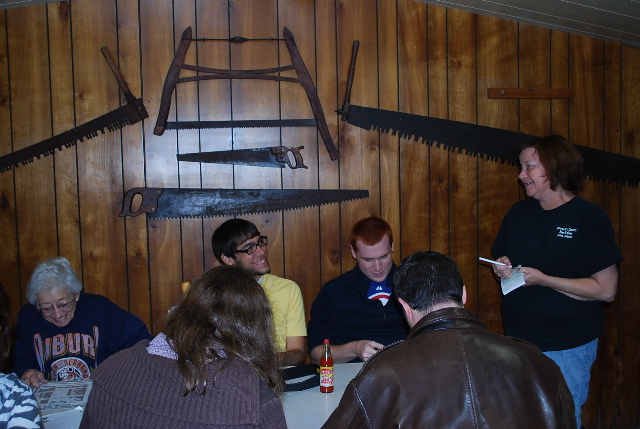
Deborah Hancock (Auburn University Class of 1974 graduate!) takes
our orders.
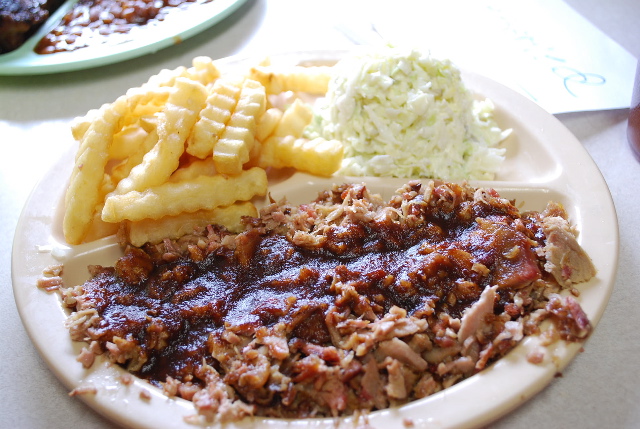
Most of us order (what else?) THE BARBECUE!
And it was delicious!
4. Interview Kathryn
Tucker Windham at her Royal Street home.

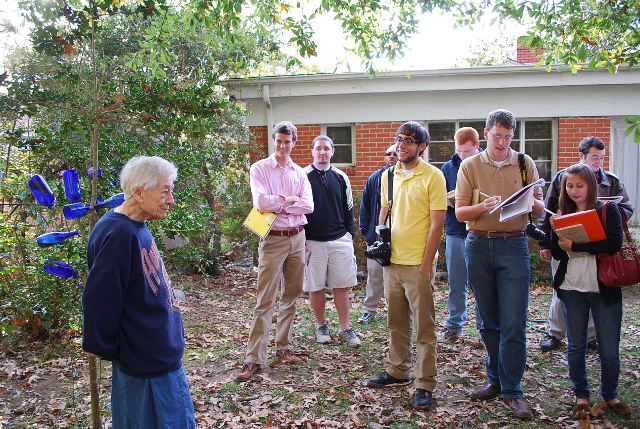
Conducting interviews in the back yard by the bottle tree.
Her advice to Auburn student journalists:
"Listen and Remember"
http://www.youtube.com/watch?v=kDwyJvsZbTs
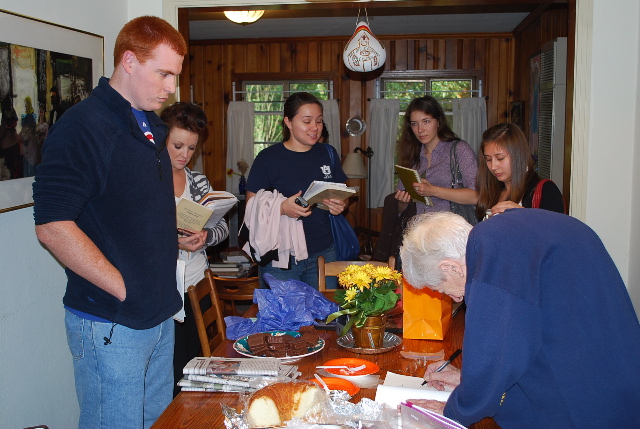
Mrs. Windham signs students' copies of "Odd-Egg Editor."
The book, an autobiography of Kathryn Tucker Windham's exciting
and memorable
career as a newspaper reporter, was required reading in Jrnl
2210/Newswriting,
fall semester 2009, taught by Professor Ed Williams, Auburn University
Department of Communication and Journalism.
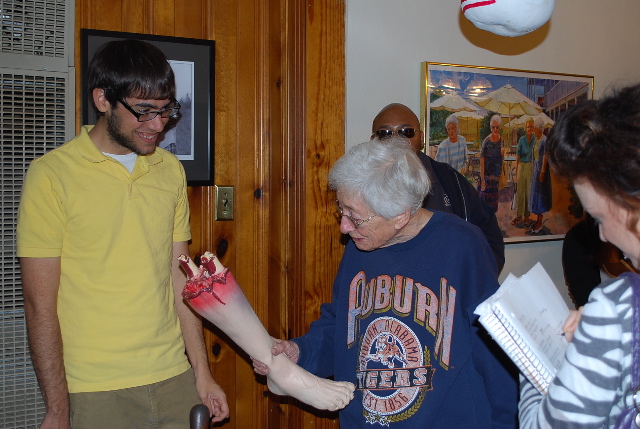
One student reporter even asked her about the severed leg she keeps in
her den!
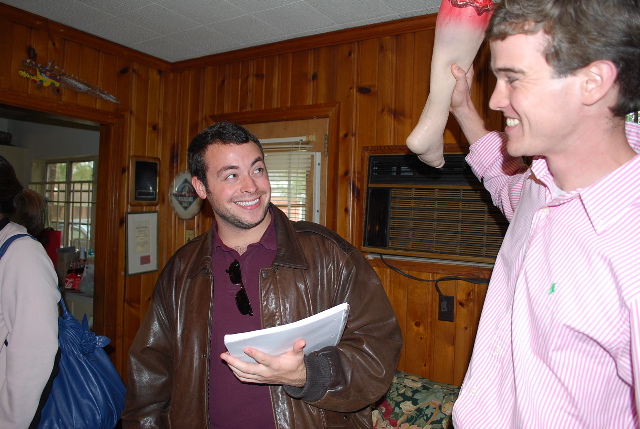
Let go of my leg! Everyone got to hold the fake leg.
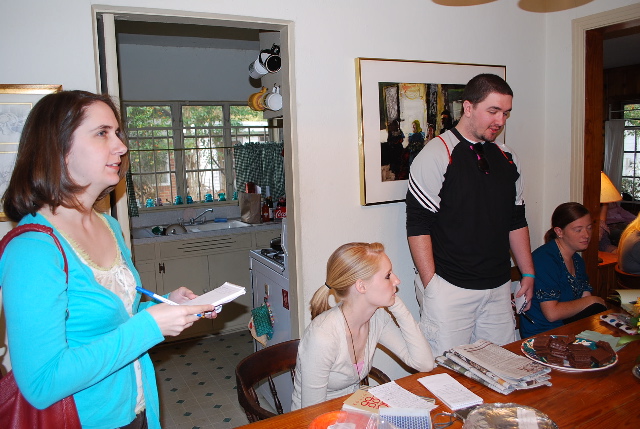
Class even gets interviewed by Selma Times-Journal reporter.
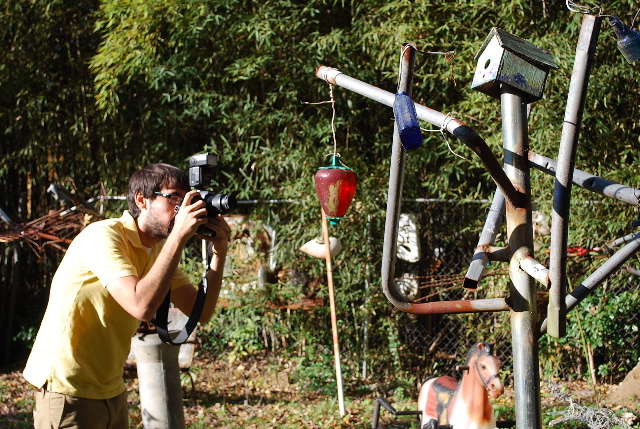
Students view the works of Charlie Lucas "the tin man" next door to
Mrs. Windham.
5. As the sun sets, we
stop for group photo
on the historic Edmund Pettus Bridge.
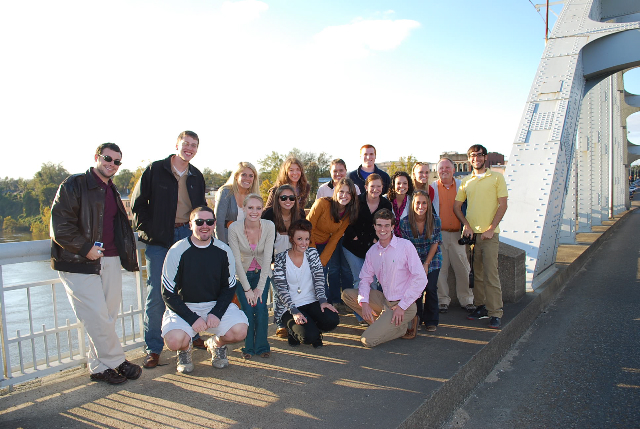
Edmund Winston Pettus Bridge became a symbol of the momentous changes
taking place in Alabama, America, and the world. It was here that
voting rights marchers were violently confronted by law enforcement
personnel on March 7, 1965. The day became known as Bloody Sunday.
The march resumed on Sunday March 21, with court protection through
Federal District Court Judge Frank M. Johnson, Jr., who weighed the
right of mobility against the right to march and ruled in favor of the
demonstrators. "The law is clear that the right to petition one's
government for the redress of grievances may be exercised in large
groups...," said Judge Johnson, "and these rights may be exercised by
marching, even along public highways."
This time, 3,200, versus the initial 600, marches headed east out of
Selma, across the Edmund Pettus Bridge and on to Montgomery. Marches
walked 12 miles a day and slept in fields. By the time they reached the
capitol on Thursday, March 25, they were 25,000-strong. Less than five
months later, President Lyndon Johnson signed the Voting Rights Act of
1965 -- the best possible redress of grievances.
6. Back in Auburn,
writing about our field trip to Selma to meet and interview Kathryn
Tucker Windham.
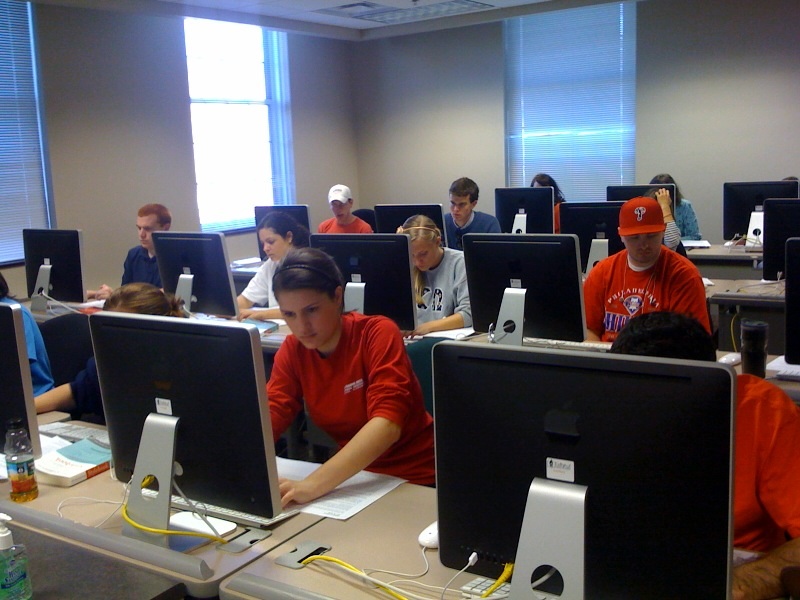
Students write about their road trip to Selma, Ala., on Nov.
18, 2009,
to meet and interview Alabama treasure Kathryn Tucker Windham.
And Mrs. Windham even writes
us a thank you note!
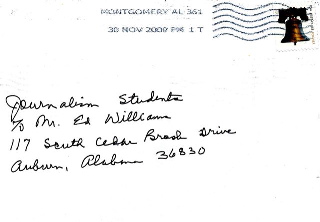
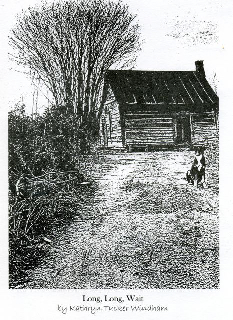
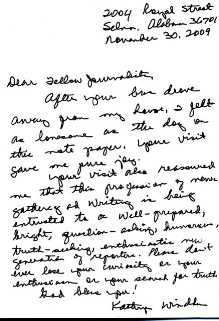
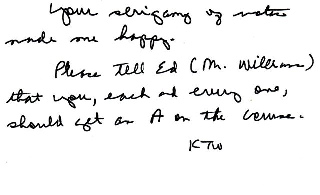
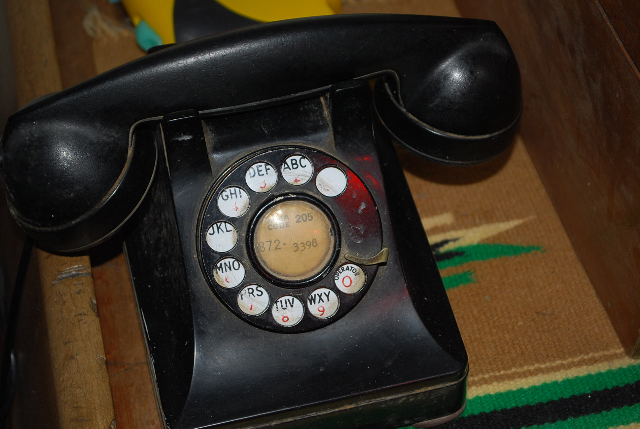
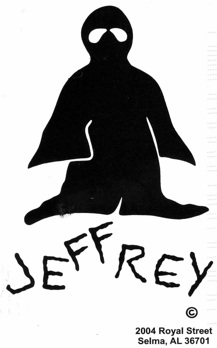
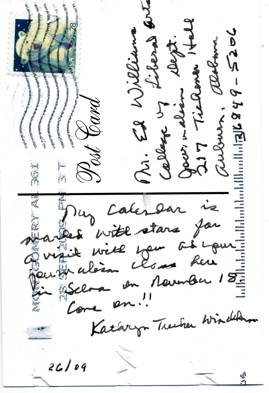
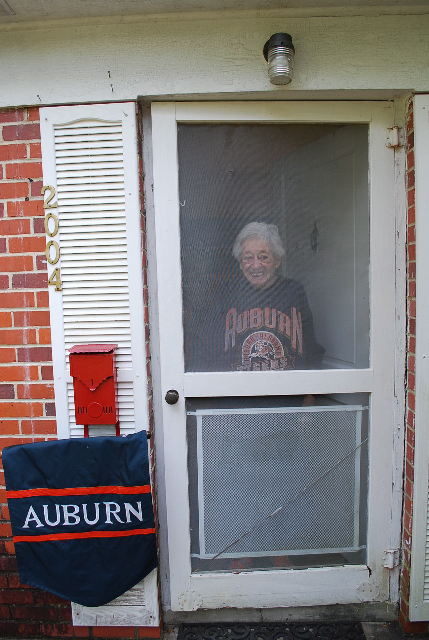
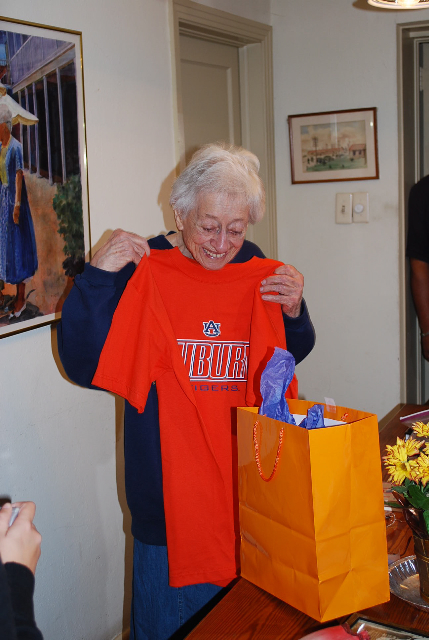






















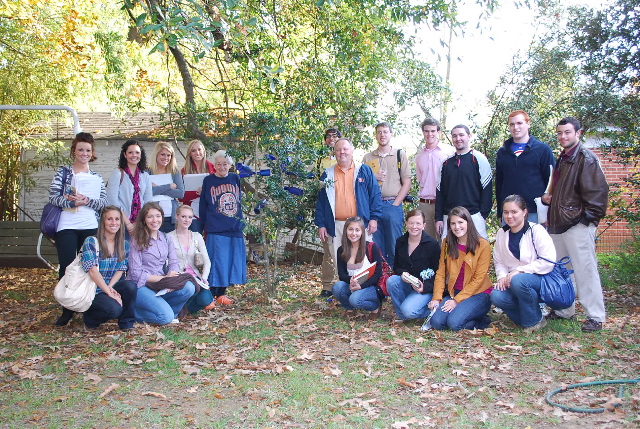 <>
<>